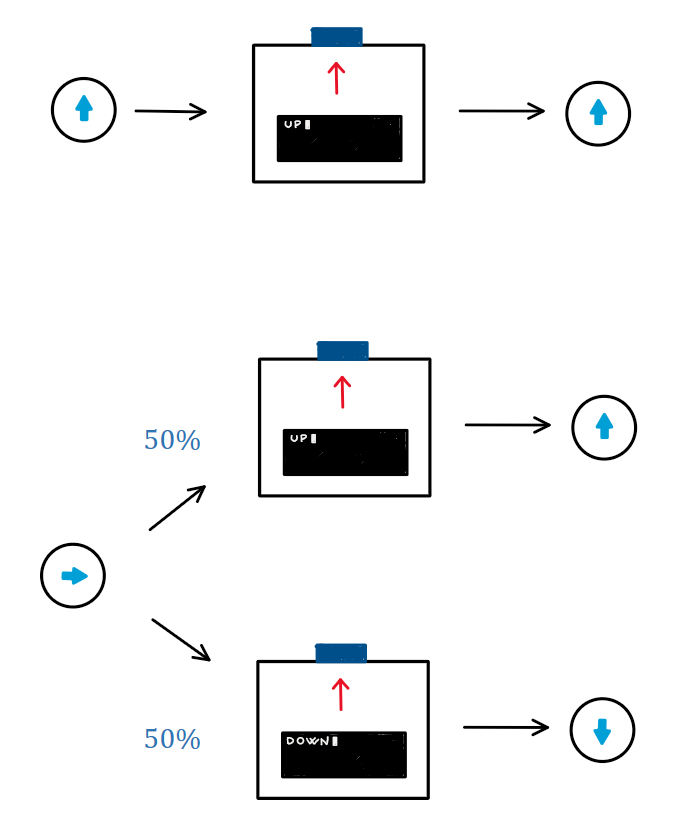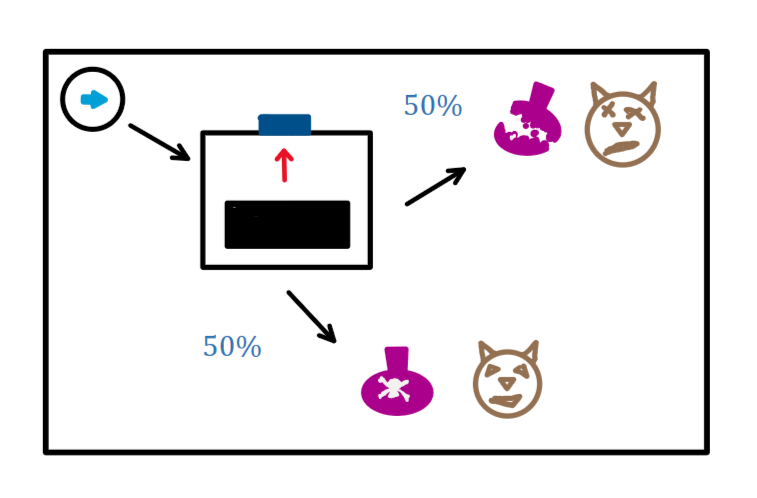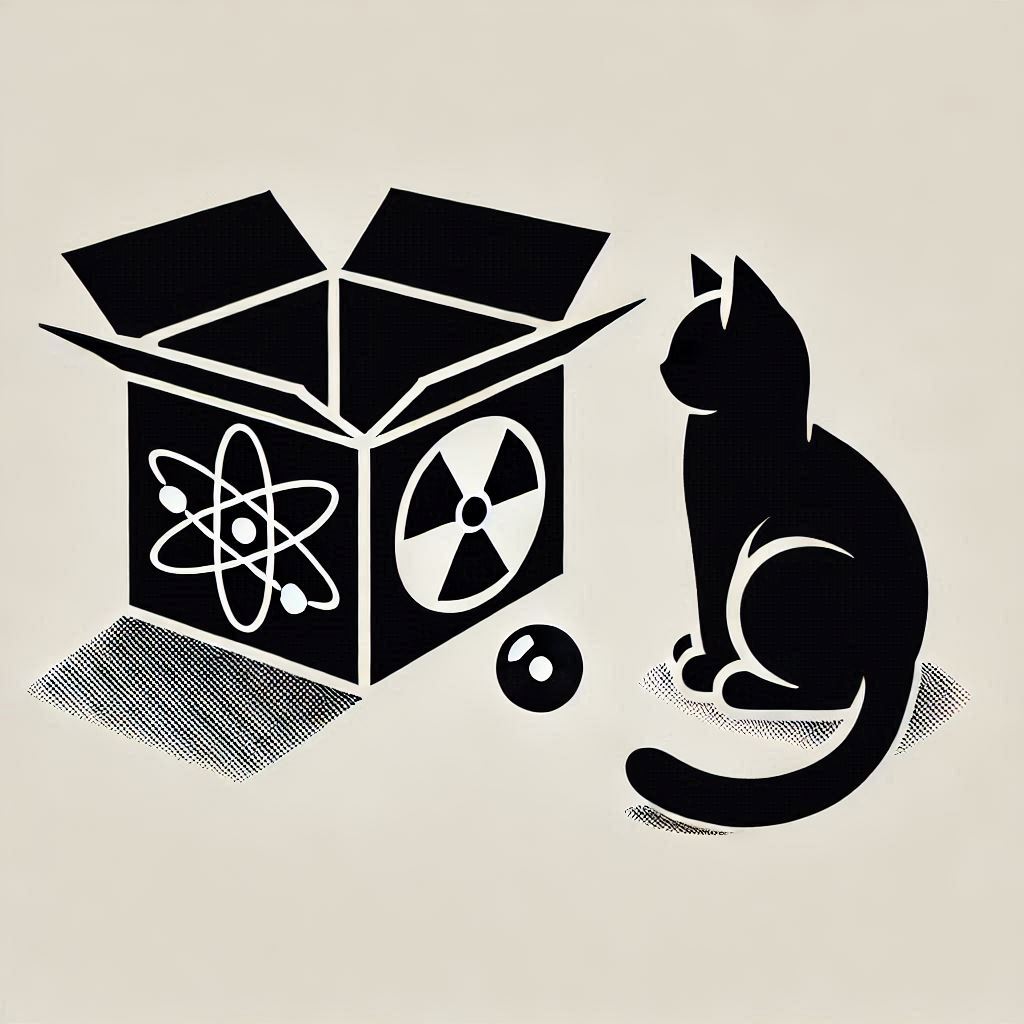Schrödinger’s cat is a famous paradox often misunderstood as a quirky quantum thought experiment where a cat is both alive and dead. However, this is a misconception, and it’s no wonder if it left you puzzled! In reality, Schrödinger’s cat paradox remains unsolved, and understanding it could deepen our knowledge about reality.
Preparation and Measurement
To clarify, let’s use an intuitive approach to quantum mechanics called the “operational approach”. In this view, quantum theory has three main elements, and its final goal is to estimate the probability of experimental outcomes.
The first two elements are the preparation of a system’s state and its measurement. In classical terms, even if you flip a coin without looking, you know it’s either heads or tails, and the act of measuring translates in simply looking at the coin. But a “quantum coin” behaves very differently. Quantum coins resemble tiny arrows, or “spins”, that can point in any direction. Furthermore measurements are much more complex than in classical theory.
Quantum mechanics aims to predict probabilities of measurement outcomes, all relative to the measuring instrument. Imagine a special box with a red arrow, a button, and a screen. If you place a spin prepared in an “up” state (aligned with the red arrow) and press the button, the screen shows “up”; similarly, it shows “down” for the opposite case. The difference is that, unlike a regular coin, the outcome changes as you rotate the instrument. Measuring a spin that’s not aligned with the red arrow might give either “up” or “down” randomly, depending on the angle between them. If the spin and the arrow are perpendicular, the probability is exactly 50% for each.
After each measurement, the spin’s state “collapses” along the measured direction, meaning its superposition – its ability to be in two states at once – depends on the measurement choice. This quantum behaviour applies to a vast array of tiny particles, from atoms to electrons, which form everything around us. But why, then, does our everyday world look so different? This question lies at the heart of Schrödinger’s cat paradox.

Transformations: Why the Box Matters
In the usual telling of Schrödinger’s paradox, the cat is placed in a box with some equipment, yet the box itself is key to the paradox. It’s not an ordinary box, but one that must be perfectly isolated, which links it to the third element of our operational approach: transformations.
Once a quantum state is prepared, it can evolve, but only under strict rules. In an isolated system – completely sealed off from the outside – its evolution must conserve information, meaning no collapse can occur. Collapse only happens when there’s an interaction between the system and a measuring device that breaks this isolation.
So, absolutely nothing within an isolated box can cause the quantum state to collapse.
What’s Real?
Finally, let’s revisit our cat and its uncertain fate. Take the cat, a quantum coin, a measuring device, and a poison dispenser, and put them in the perfectly isolated box. The measuring device aligns the red arrow perpendicular to the spin’s state, creating a superposition. At a set time, the device measures the spin, and based on the outcome, either releases the poison, killing the cat, or leaves the cat unharmed. So far, this seems straightforward.
Now, assume quantum theory applies to everything, regardless of scale. This means that events inside the box don’t make the total state collapse. From outside the box, we cannot learn anything about the measurement inside, so the cat’s state becomes entangled with the spin’s state. We could then measure the entire box to break the isolation and gain information. If we measure the cat’s heartbeat, we would find it either alive or dead, each with a 50% probability. However, by carefully aligning our measurement device, corresponding to the same direction to which the original spin in the box was pointing, we would find the cat in a superposition of both states in complete certainty!
How can the cat be definitively alive or dead to someone inside the box, while appearing in a superposition to someone outside? This is the paradox Schrödinger wanted to illustrate.

Who’s Right?
Can we determine who’s correct? To solve this, we would need to perform this experiment and observe the results—though this remains an unlikely feat. If measuring the entire box yields no superposition, it would mean a collapse happened inside, suggesting that quantum mechanics doesn’t apply on all scales and may need adjustment. This would confirm that our everyday world is indeed classical.
Yet, experiments increasingly confirm quantum mechanics at larger scales, raising concerns among physicists that a superposition might indeed be observed in such a cat experiment. This would imply that both perspectives are simultaneously valid, and thus, reality may not be absolute but relative to the observer’s experience.

